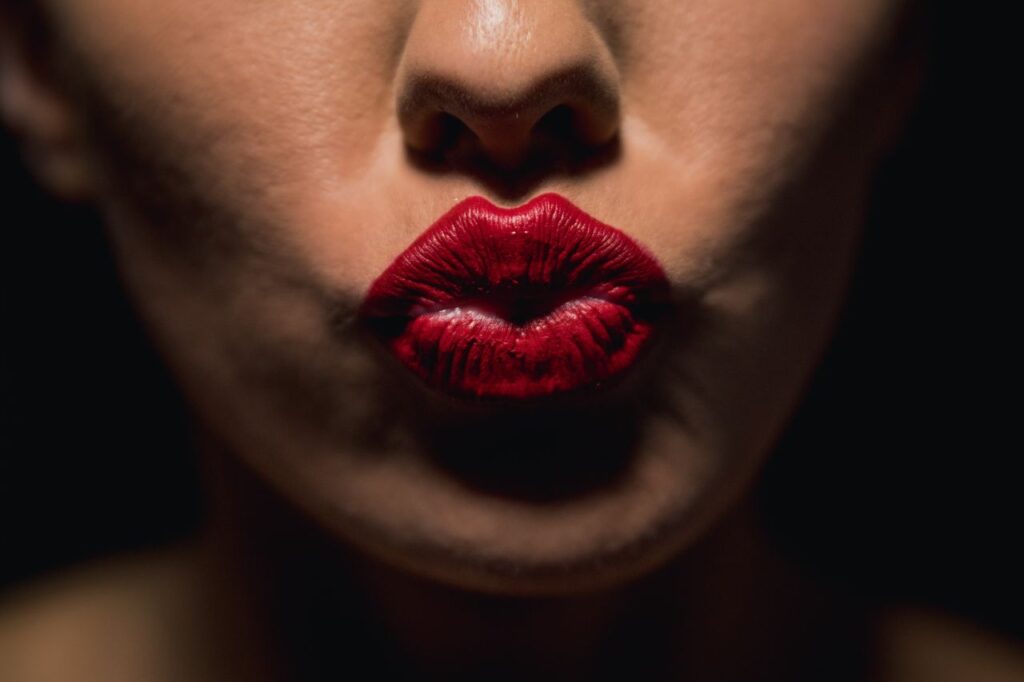Many people strive to achieve naturally full, vibrant lips. Permanent lip makeup, such as lip tattoos, offers a semi-permanent solution, enhancing lip contour and colour.
However, unlike tattoos on other parts of the body, lip tattoos require specific aftercare due to the high moisture content of the lips, which can lead to faster fading. A careful aftercare regimen ensures optimal results and prolongs the tattoo’s vibrancy.
This guide will provide essential aftercare tips, from initial preparation to long-term maintenance, for preserving your permanent lip makeup.
Let’s get straight to the point
Permanent lip makeup can give you vibrant, full lips but requires specific aftercare to maintain its appearance. Before your procedure, take antiviral medication if you have a history of cold sores.
Post-procedure, expect initial swelling and an intense colour that fades over a few days. Key aftercare includes applying cold packs, avoiding washing the area, and moisturising it with recommended ointments.
Avoid certain foods, sun exposure, and friction on the treated area for two weeks. Long-term care involves regular lip balm with SPF, avoiding exfoliants, and scheduling touch-ups. Proper aftercare prevents complications like infection, pigment loss, and prolonged healing.
Choosing a skilled tattoo artist and following these steps will ensure the best and longest-lasting results.
Preparing For The Lip Procedure

To achieve the best results from your lip tattoo, preparation is key. Here are steps to take before your procedure:
- Antiviral Medication: If you have a history of cold sores, fever blisters, or chickenpox, take antiviral medication like Valtrex, Famvir, or Zovirax before and after the procedure. This precaution helps reduce the risk of recurrence and is necessary every time you apply permanent lip colour.
- Consult Your Doctor: Because antiviral medication typically requires a prescription, contact your doctor to discuss your planned lip tattoo. They can provide the necessary medication.
Following these steps helps prevent complications from interfering with your procedure or healing process.
Immediate Post-Procedure Appearance
Immediately after the lip tattoo procedure, you may notice the following effects:
- Lip Appearance: Your lips will appear more defined and voluminous, giving the impression of lip fillers.
- Colour Intensity: The initial colour may look intense, similar to a heavy lipstick application. However, within three days, the colour will fade by approximately 50%.
- Swelling and Peeling: Swelling is common, and within 3-7 days, the outer layer of pigment will flake off, revealing a softer, more natural colour underneath.
Allowing your lips time to heal, peel, and fade is essential. Complete healing generally takes up to 10 days.
Essential Post-Operative Care
Aftercare is vital to ensure the success of your permanent lip makeup. Follow these steps for the best results:
Immediate Aftercare
- Use Cold Packs: For the first 4-8 hours, apply cold packs for 10-15 minutes every hour. This reduces swelling and relieves discomfort. Discontinue ice use after the first day.
- Avoid Washing the Area: For the first seven days, avoid washing the tattooed area with soap or water, as these can disrupt the pigment bonding process.
- Cleaning the Area: Use a Q-tip soaked in cool water to gently clean the area without rubbing. Avoid toothpaste, mouthwash, or any products containing soap during this period.
Moisturising and Ointment Application
- A&D Ointment: For the first 24 hours, apply a thin layer of A&D ointment using a Q-tip. This helps keep the area moist.
- Vitamin E Oil: From day two onward, use Vitamin E oil to maintain moisture.
- Avoid Petroleum-Based Products: Avoid Vaseline or mineral oil, as these can interfere with healing.
Keep the area moist, reapplying balm as needed, especially before bedtime, after showering, and in the morning. Moisturising supports the pigment’s bonding process, helping the tattoo last longer.
Daily Care Tips For The First Two Weeks
Guidelines for the First Week
- Use a Straw for Beverages: In the first two days, use a straw for all drinks to avoid disturbing the lip area.
- Avoid Certain Foods: Avoid foods that require biting into or are acidic, greasy, oily, or spicy.
- Minimal Toothpaste Use: Use as little toothpaste as possible for the first three days, and apply ointment beforehand to protect the pigment.
- Lipstick and Cosmetics: Do not apply lipstick or cosmetics to the treated area for at least seven days. This prevents possible interference with pigment bonding.
Protecting the Tattoo During Healing
- Avoid Sun Exposure: Sun exposure can lead to pigment fading. Wear a hat and avoid direct sunlight for at least two weeks.
- Skip Hot Showers: Steamy showers or baths can weaken the bonding process. Avoid these for the first two weeks.
Sleeping Precautions
For the first week, use a satin pillowcase to minimise rubbing against the lips. Cotton pillowcases can cause pigment loss, while satin is less abrasive.
Long-Term Lip Tattoo Maintenance
Hydration and Moisture
- Regularly Apply Lip Balm: For up to two weeks after healing, apply a petroleum-based balm to keep lips hydrated.
- Sunscreen Protection: Use a lip balm with SPF to protect against sun fading. This helps extend the tattoo’s longevity.
Avoiding Retin-A and Exfoliants
Do not apply products with Retin-A or exfoliants near the tattooed area for at least 30 days, as they can lighten the pigment.
Preventing Pigment Loss
- Do Not Pick at Flakes: Allow any crusting or flaking to fall off naturally to avoid pigment loss and infection.
- No Kissing or Rubbing: To protect the pigment, avoid activities that involve friction, such as kissing, for about two weeks.
Common Challenges And Solutions
Dealing with Swelling and Discomfort
- Cold Compresses: Use cold compresses for the first day only to manage swelling. After the initial period, switch to alternative cooling methods, such as tea bags.
- Pain Relief: Over-the-counter medications like Tylenol can be used for mild discomfort.
Preventing Fading
Lip tattoos are more prone to fading than tattoos on other body parts. Factors such as moisture, friction, and natural lip shedding contribute to this. Here’s how to manage fading:
- Retouching: Schedule touch-ups as needed, typically every few months to a year, depending on the desired colour intensity.
- Avoid Lip-Licking: Avoid licking your lips, which wears down the pigment.
- Stay Hydrated: Hydrated lips retain colour better. Drinking water and applying balm will support pigment longevity.
Risks Of Not Following Aftercare
Neglecting aftercare can lead to several issues:
- Infection: Picking at flakes or touching the area with unwashed hands can introduce bacteria.
- Pigment Loss: The healing process may be disrupted, causing premature fading and uneven pigment.
- Prolonged Healing Time: Ignoring moisture guidelines can delay healing, increasing the risk of complications.
Following the recommended guidelines prevents these risks and ensures a smoother healing process.
Additional Tips For Lip Tattoo Care

- Paper Towel Barrier: Some artists recommend placing a paper towel between your tattooed lip and teeth for the first few days to prevent moisture damage.
- Use Non-Acidic Foods: To avoid irritating the area, stick to bland, non-acidic foods until your tattoo is fully healed.
- Regular Check-Ins: After a few weeks, assess your lip tattoo. And schedule a touch-up appointment if needed to maintain colour and definition.
Choosing A Skilled Tattoo Artist
The skill of your tattoo artist plays a significant role in the outcome of your lip tattoo. Look for an experienced, reputable artist specialising in permanent lip makeup to ensure a quality result.
- Research Portfolios: Review the artist’s previous work to confirm they have experience with lip tattoos.
- Hygiene Standards: Ensure the studio follows strict hygiene practices to minimise the risk of infection.
Conclusion
Permanent lip makeup offers a beautiful solution for enhancing lip colour and contour. However, aftercare is crucial to ensure the best results.
Following a thorough post-treatment routine, avoiding moisture, sun exposure, friction, and moisturising regularly will help retain the tattoo’s vibrant look.
Whether aiming for a subtle or more intense effect, diligent aftercare will maximise the longevity and beauty of your lip tattoo.
In the long run, taking time to research and select a skilled artist, following all aftercare instructions, and incorporating regular maintenance into your routine will give you the desired results.

